It's called a smolt wheel, and it's changing what scientists know about migrating salmon

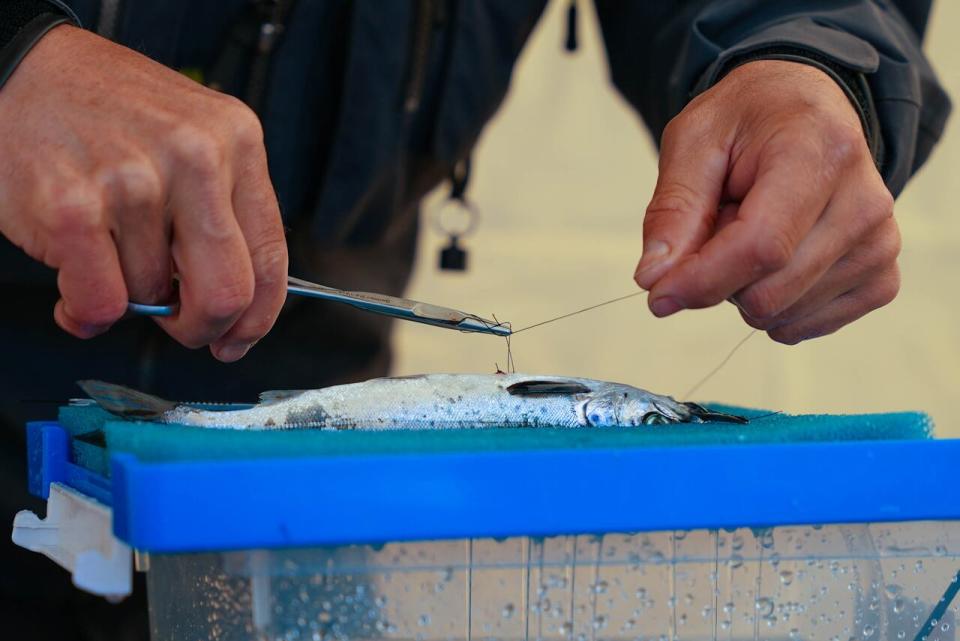
A small smolt, or young salmon, is stitched up after receiving a transmitter that will help determine the fish's migration patterns and other scientific data. (Troy Turner/CBC)
Floating in the middle of the Terra Nova River in rural Newfoundland is an object that looks like the back end of a cement truck attached to a metal raft.
It's actually a scientific tool that will help people better understand the migration of young salmon as they travel to the ocean, and the health of the stocks.
Called a smolt wheel, it steers salmon into the large end of the apparatus and funnels them into a holding tank. Once there, they are tested and tagged, all in the name of science and conservation.
"It has never been used on the island before," said John Baird, a project manager with the Freshwater-Alexander Bays Ecosystem Corporation in Glovertown. "It has worked other places, and we're hoping will work pretty well here in terms of giving us a good estimate of the smolt coming out of the Terra Nova River."
WATCH | See the smolt wheel in action
A smolt is a young salmon, in the stage of its lifecycle when it grows silvery scales and migrates to saltwater. It's the last time the salmon will be in freshwater until it's ready to spawn, and the final stage before being considered an adult salmon.
There's been an adult salmon count on the Terra Nova River since 1955, said Baird, they have good data on adult salmon returning.
"But we never know how many smolt are actually in the river, so it'll give us a good idea of productivity of the river, and the survival rate when they go to saltwater."
The local conservation group has teamed up with the Atlantic Salmon Federation and the federal Department of Fisheries and Oceans on the initiative.
DFO has been putting acoustic tags — or small transmitters — in a small percentage of the fish that swim into the holding tank.
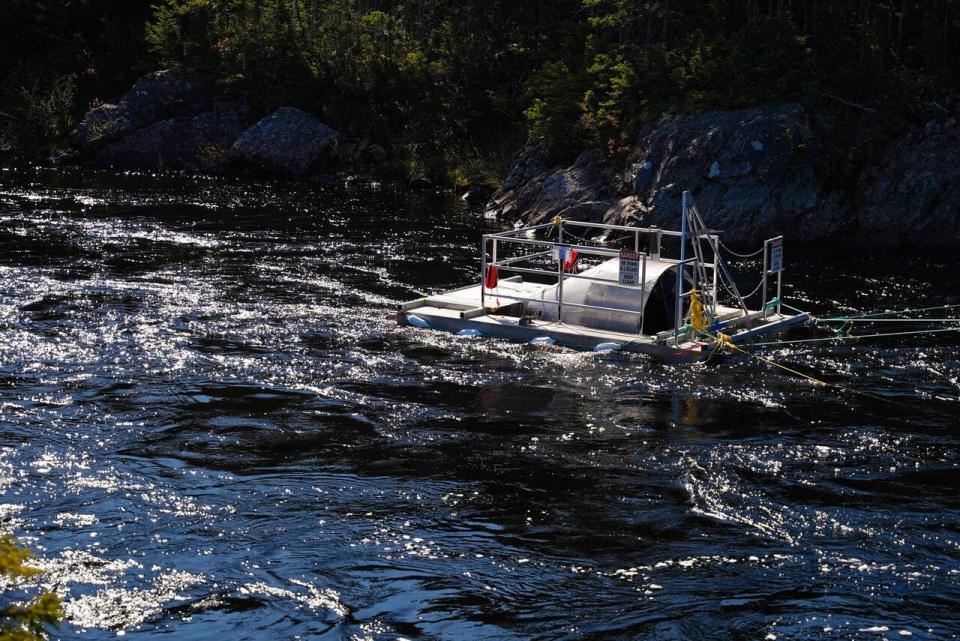
Near the mouth of the river, the smolt wheel is catching young salmon to tag, monitor and analyze. (Troy Turner/CBC)
Curtis Pennell, a freshwater biologist with DFO's science branch, said 10 receivers — used to pick up the signal from the tags — are placed in the ocean in strategic locations.
"As the fish pass, the receivers will pick up the tag number and the ID, so that gives us a bunch of different information," he said. "The migration routes, the time it's taken for the fish to move out bay and I guess, most importantly, their survival."
The fish could make it as far as Greenland, he said.
"We've had fish from Newfoundland … picked up off shore towards Hibernia that way. So they don't always just hug the coast."
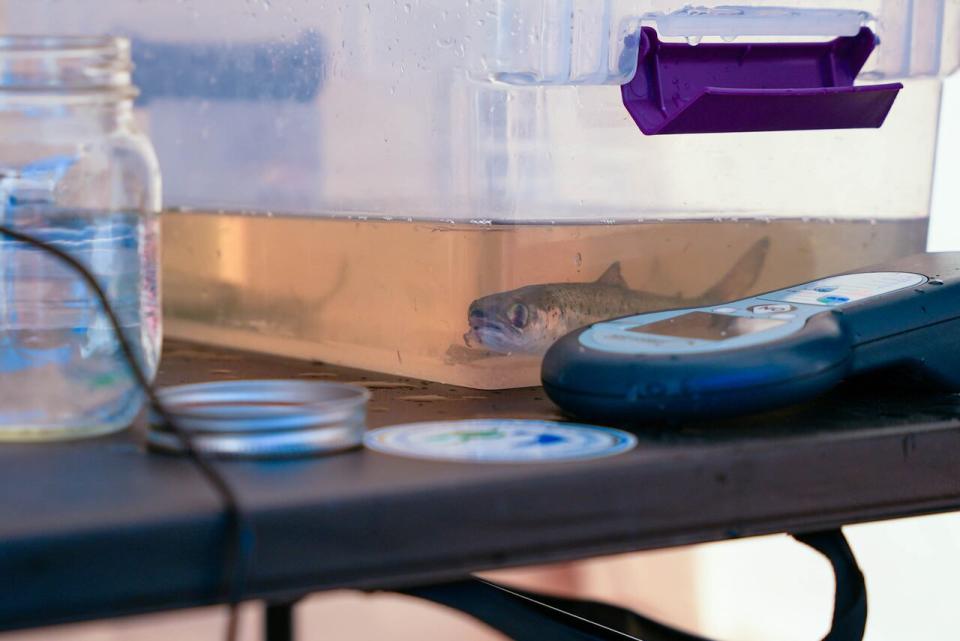
This bath sedates the smolt prior to having them tagged. (Troy Turner/CBC)
All the remaining fish in the holding tank are tagged by the salmon federation.
Jordan Condon, a science co-ordinator for the salmon federation's Wild Salmon Watershed program, said they tag some of the fish they catch and then put them back in the river.
"You can do some calculations with total amount of smolt you catch, the total amount tagged, and then the total amount of recaptures that we're getting to kind of get an estimate of smolt run."
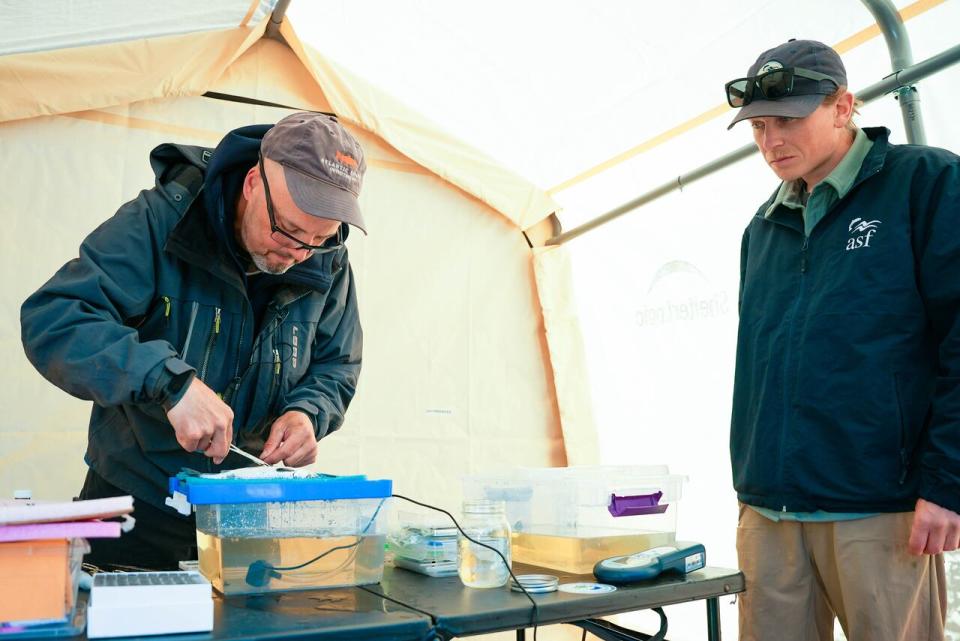
Curtis Pennell, left, a Department of Fisheries and Oceans biologist, and Jordan Condon, the Atlantic Salmon Federation's science co-ordinator, work in the riverside surgery set up in Glovertown. (Troy Turner/CBC)
So far, he says, they estimate there are 20,000 young salmon on the Terra Nova River.
"We're [also] using this to help determine the freshwater productivity," he said. "We'll be doing water temperature monitoring, water quality monitoring, we'll be doing some electrofishing to get the first, couple age class, density assessments."
The groups have been inviting students to view the tagging process to help them better understand the science behind the process.
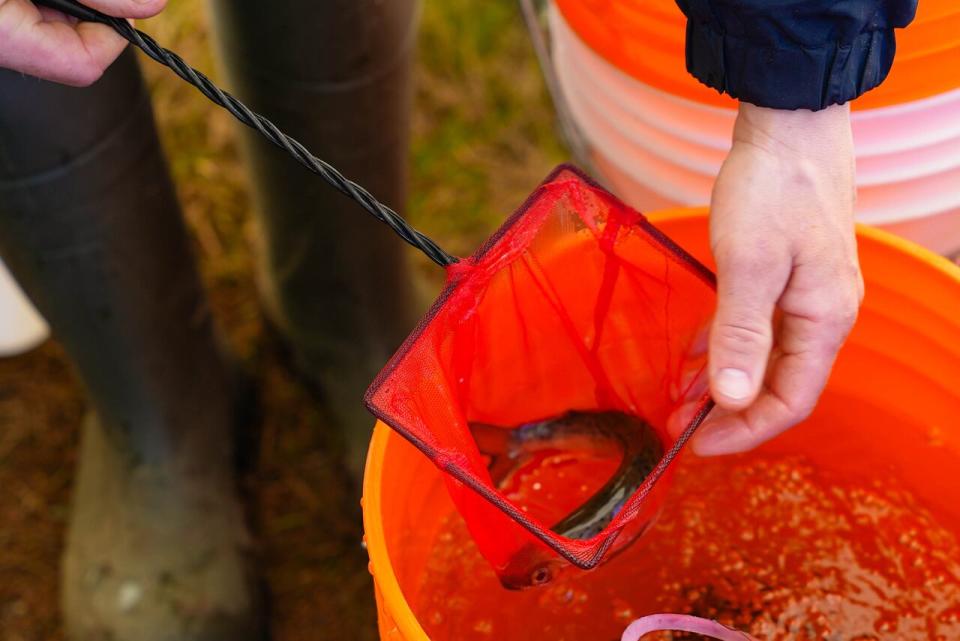
Small smolt are scooped up and ready to be tagged. (Troy Turner/CBC)
Ian Simpson, a Grade 9 student at Glovertown Academy, said he loves salmon fishing and being out on the water.
"So it's pretty cool to see the smolt up close and then get to be a part of tagging the fish," he said.
"I think it's very important, because part of the reason they're doing this is they're not waiting for the ecosystem to start failing and then helping. They're doing this as a precaution. So 100 years from now, that, system is still healthy, and lots of fish and other organisms are also helping."
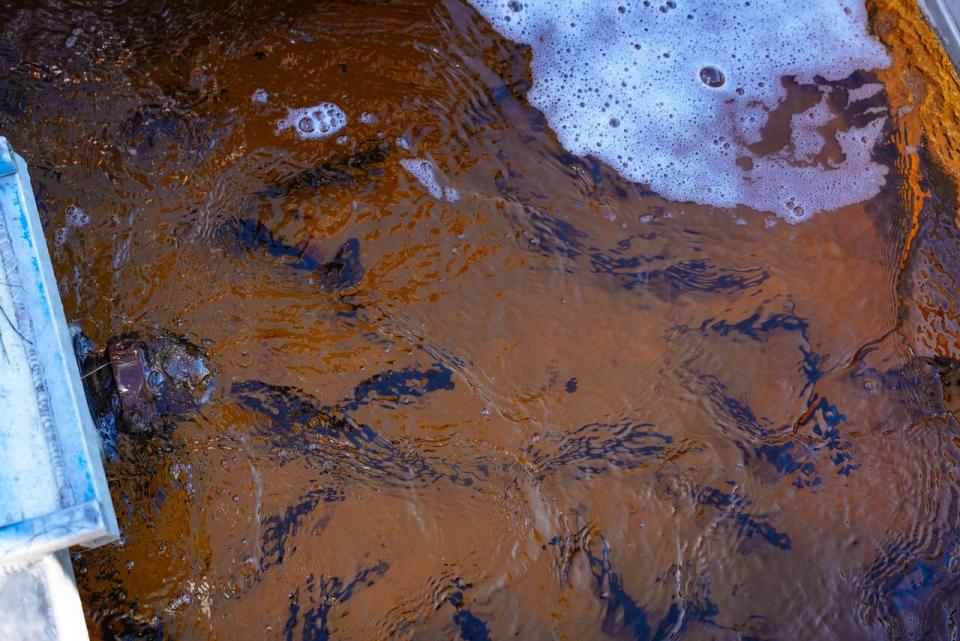
Smolt swim around the wheel's holding tank. (Troy Turner/CBC)
For Grace Powell, also in Grade 9, it's a great way to learn.
"It's definitely refreshing from the classroom to go outside and do some learning about some stuff that we don't learn in the classroom," she said.
The group plans to use the smolt wheel on the Terra Nova River for five years.

Near the mouth of the Terra Nova. River, a smolt wheel is being set up to monitor, tag and detail salmon population. (Troy Turner/CBC)
Download our free CBC News app to sign up for push alerts for CBC Newfoundland and Labrador. Click here to visit our landing page.


